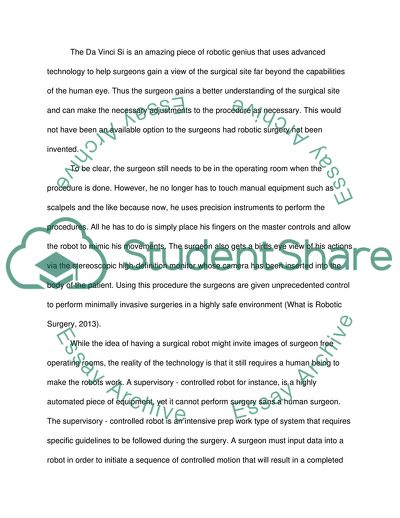Cite this document
(Technological Description and Explanation of the Associated Science Essay Example | Topics and Well Written Essays - 3000 words, n.d.)
Technological Description and Explanation of the Associated Science Essay Example | Topics and Well Written Essays - 3000 words. https://studentshare.org/sociology/1818920-robotic-surgery
Technological Description and Explanation of the Associated Science Essay Example | Topics and Well Written Essays - 3000 words. https://studentshare.org/sociology/1818920-robotic-surgery
(Technological Description and Explanation of the Associated Science Essay Example | Topics and Well Written Essays - 3000 Words)
Technological Description and Explanation of the Associated Science Essay Example | Topics and Well Written Essays - 3000 Words. https://studentshare.org/sociology/1818920-robotic-surgery.
Technological Description and Explanation of the Associated Science Essay Example | Topics and Well Written Essays - 3000 Words. https://studentshare.org/sociology/1818920-robotic-surgery.
“Technological Description and Explanation of the Associated Science Essay Example | Topics and Well Written Essays - 3000 Words”. https://studentshare.org/sociology/1818920-robotic-surgery.


